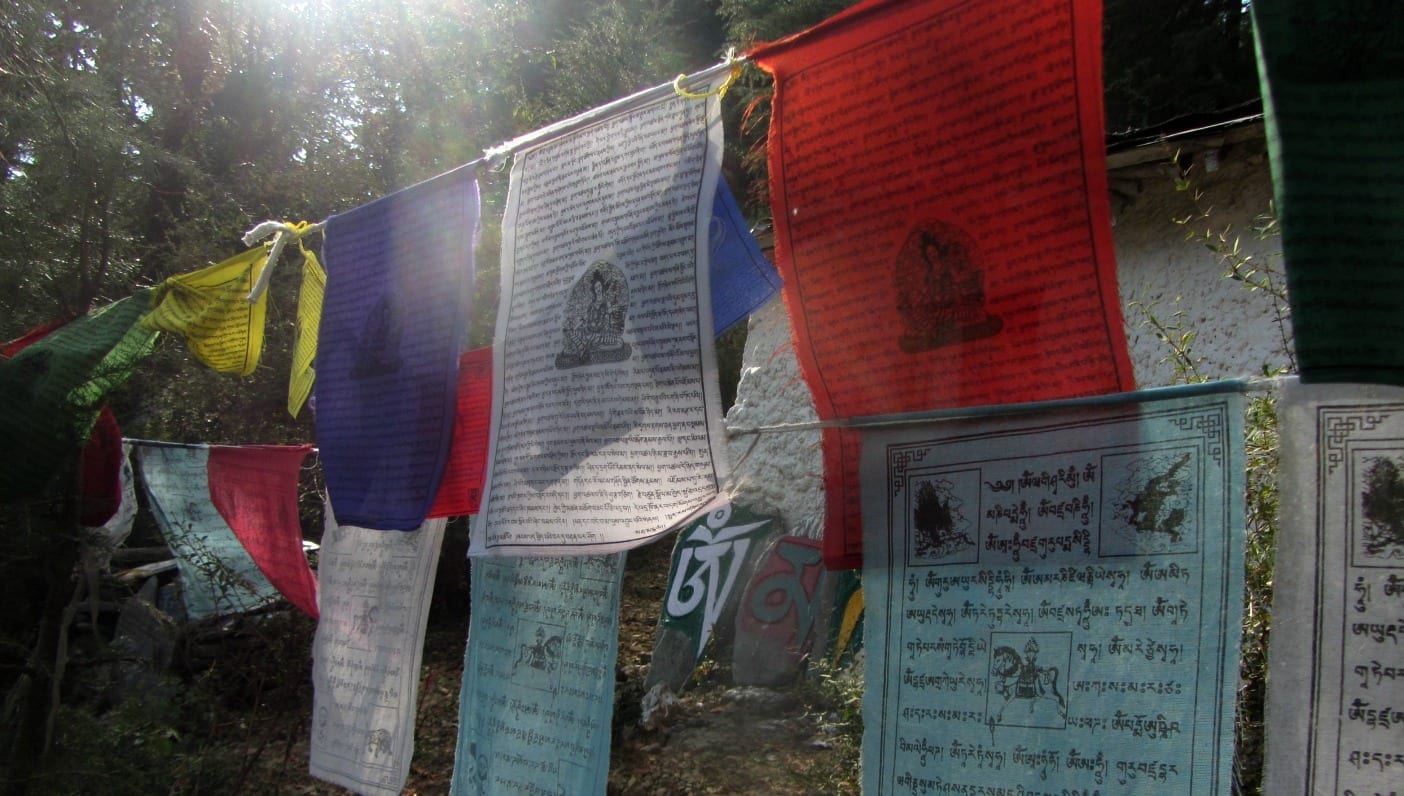
This is part of a month-long series on Wanderlust about how items and practices came into being.
Prayer flags have been around for thousands of years. These colorful flags are often seen floating above river crossings or atop mountain passes protecting those traveling through. Originating in Tibet, they were first used as banners to differentiate warriors going into battle. As Buddhism proliferated in Tibet during the seventh century and flags were used for blessings to protect Buddha, they became known as prayer flags. The flags began to represent the peace and compassion associated with Buddhist practices. Early flags held prayers and pictures of fierce gods known to protect Buddha.
Troubled History
During the Chinese Cultural Revolution (1966–1976) prayer flags became largely discouraged. The Chinese took over Tibet, destroying most of what culture and religion existed. Soldiers burned the flags they came across, as many Buddhists continued to hang them to represent their dedication to ahimsa, or nonviolence.
In turn, India became a place of refuge for many exiled Tibetans. Today the city of Dharamsala is a mecca for Tibetan Buddhists who followed the lead of the 14th Dalai Lama when he migrated in search of shelter. If you visit his temple in Dharamsala you can walk the nature walk, which is lined with hundreds of flags.
Color and Style
Today you may find traditional or contemporary depictions, but all prayer flags have the same five colors representing the earthly elements: blue for the sky, white for the clouds, red for fire, green for water, and yellow for earth. The colors and order signified the importance of uniting all elements to achieve balance between health and harmony.
There are two different styles of prayer flags you may come across. Lung-ta (meaning wild horse) prayer flags are the traditional flags many have seen strung on a line and hung from temples and trees. These flags represent the harmony and balance found in nature. The other type, Darchor prayer flags, are vertical standing flags that hang on a pole and carry wishes of longevity, fortune, health, and money.
Regardless of any person’s religion, coming into contact with the silent blessing of prayer flags is a positive omen.
Look Around
Prayer flags are primarily found in Buddhist countries, hung in spaces where the wind will release the spiritual vibrations held within each flag. Because they are used to please the local gods and spirits, they are often found in nature where these deities reside, usually around lakes, mountains, and valleys. Regardless of any person’s religion, coming into contact with the silent blessing of prayer flags is a positive omen.
As people began to travel internationally and witness the beauty of these flags fly in the wind, they started to pop up in unfamiliar places. Even walking around San Francisco, I see these banners flying free off private balconies, meditation centers, and storefronts alike. These flags hang outside as images fade from the elements, symbolizing the natural cycle of life. Although they may not always be used for the original religious purposes, they are a tribute to nature and peace that represent a spirit of harmony.
Keep your eye out for prayer flags both at home and on your travels. While these symbols have a long history, their message represents a struggle to achieve world peace. Take a moment to soak in the blessing the next time you see one.
—
 Cameron Cler is traveler at heart, obsessed with seeing the world and discovering ways to contribute to positive global change. As a registered yoga teacher, she balances her constant travel and work in the startup world by channeling her inner yogi and welcoming peace in chaotic moments. Her passion is cultivating creativity and inspiration while sharing travel stories, yoga classes, wellness tips, and smiles with her friends, family, and students.
Cameron Cler is traveler at heart, obsessed with seeing the world and discovering ways to contribute to positive global change. As a registered yoga teacher, she balances her constant travel and work in the startup world by channeling her inner yogi and welcoming peace in chaotic moments. Her passion is cultivating creativity and inspiration while sharing travel stories, yoga classes, wellness tips, and smiles with her friends, family, and students.
